Even while working on a healthier diet for better kidney function, sometimes it’s impossible to avoid a quick stop for a bite. With chronic kidney disease, you probably have a half-dozen doctor’s appointments, pharmacy pick-ups and work. So in those times where a pit stop is a necessity, do you know of the fast foods that are okay for kidney disease?
I will not encourage my clients or anyone with chronic kidney disease to routinely go out for fast food as frequent dining out does not help kidney disease. So this article is literally about fast food that is okay for kidney disease when it’s an unavoidable situation.
Moderation and portion control will always be the name of the game here. But as I said – sometimes it’s unavoidable. It’s best to make a smarter choice than to drive up and throw everything about your kidney health goals out the window.
Table of Contents
The problems with fast food for kidney disease
Sodium in fast food
It’s not uncommon knowledge that fast food and restaurants have higher sodium content than if we were to make the same food at home. However, we generally underestimate how much is in that fast food.
In fact, according to a study done in 2014 revealed that 90% of the adults that guessed the sodium content of their meal were underestimating by an average of 1,000 milligrams.
Since then, restaurants are becoming more transparent in their nutrition information with tools like nutrition calculators and PDF documents of full nutrition information available to the public.
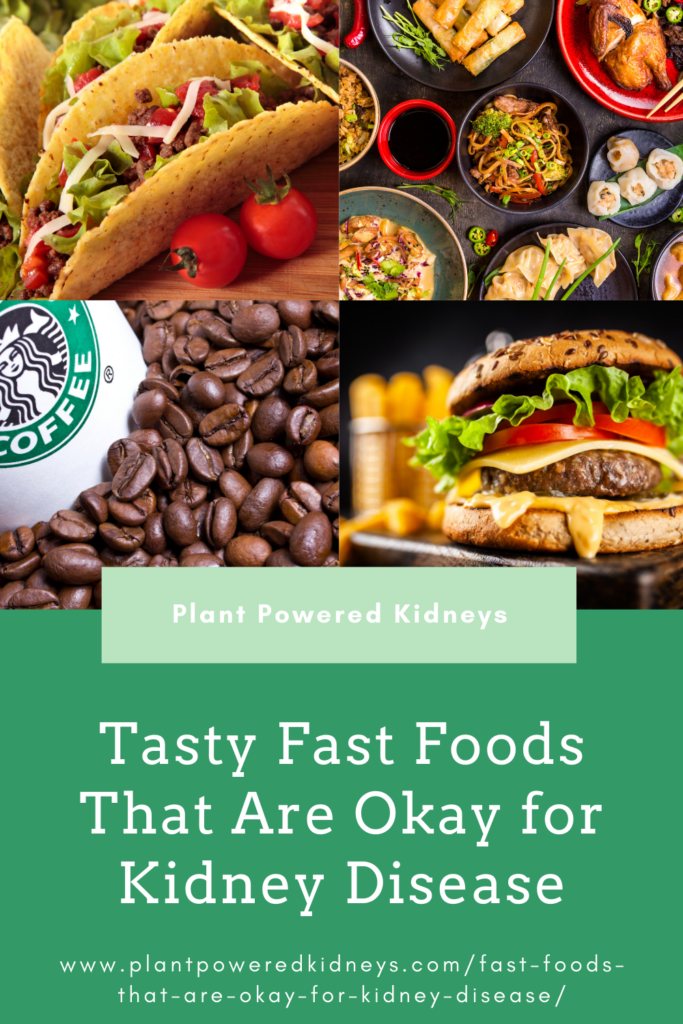
But it doesn’t mean sodium is not still a big problem. And with kidney disease, it especially is of concern. One of the top causes of kidney disease is hypertension, or high blood pressure.
Phosphate additives in fast food
Arguably one of the most challenging parts of a renal diet and fast food is determining the amount of phosphorus. Finding low phosphorus fast food is difficult; nearly impossible.
If your phosphorus levels are already trending above 3.5 mg/dL, you are at a higher risk of further damaging your kidneys and increasing risk of death.
Phosphorus is not a required nutrient to be listed on the nutrition label, although evidence suggests that it may be beneficial to the public for manufacturers to include phosphate information on their nutrition facts.
How to find phosphorus additives online
If you are curious about finding phosphate additives in foods at a restaurant, here are the steps you will need to take:
- Look up the official restaurant website and search for nutrition ingredients. Ideally they will have a PDF that you will be able to pull up. A good example is Subway listed under “Our Ingredients.”
- Once you have the PDF up, do a “find” search of the document and type in the letters phos.
- Make note of the foods you pass that do not have a “phos” highlighted within the nutrition information. You may need to scan those a little closer as some may say “refer to x product ingredients,” which may or may not have phosphorus listed.
- Once you comb the ingredients of the food items, you will have your own menu of no added phosphate foods!
- Warning: companies can change their ingredients at any time without notice. The list you create will not be set in stone.

Potassium is still unclear in fast food
Luckily, potassium may be a bit easier to find. This should especially be the case more so since 2016, when the FDA required potassium content to be listed. However, this requirement has yet to be enforced and may still take time to become more obvious on food and nutrition labels.
However, potassium additives are now becoming a more prevalent issue with kidney disease, and of course are just as difficult to find obviously labeled.
You can use the steps noted above for finding phosphate additives to also find potassium additives. Just search for “potassium” instead of “phos.”
But I will add that potassium is likely not an issue for many with CKD, in fact, you may or may not need to limit your potassium.
If you are already struggling with these issues, I don’t recommend you look even for fast foods that are okay for kidney disease. Because ultimately, they’re not if your labs and health conditions are not well-managed.
Medications to take with fast food for kidney disease
You may have been prescribed what is called a phosphate or phosphorus binder. This is a medication that is intended to prevent the absorption of phosphates into your bloodstream.
Too much phosphorus is very harmful to the body over long periods of time and can lead to issues such as vascular calcification (hardening of the arteries), skin breakdown, joint pain and damage, bone damage, and higher risks of heart attack, stroke and death.
If your doctor has prescribed phosphorus binders to you, be sure to take them as prescribed. They are most effective when taken at the beginning of your meal. If you struggle with phosphorus control, you may need to discuss a dose adjustment with your nephrologist or dietitian, especially when it comes to eating fast food.
Always discuss medication changes with your prescribing physician.
How much fast food is okay for kidney disease?

As stated, moderation will always be the name of the game. If you are able to keep it to about one meal per week, and keep to healthier choices, you are more likely to not experience significant changes in your renal function.
Serving sizes of the foods are essential in this situation. By selecting a smaller, or even “junior” meal, you are better limiting the problematic items listed above. Choosing to eat out once per week but indulging in an entire pizza is not considered “one meal.”
Fluids can also play an important role in kidney disease and kidney health. Choose the smallest size available, which is oftentimes a 10-12 ounce cup already, to prevent excessive bloating, swelling, and fluid overload.
Popular Fast Food Restaurants
According to USA Today, the top 5 types of fast food chains in America are;
- McDonald’s
- Starbucks
- Subway
- Burger King
- Taco Bell

Luckily, the larger a restaurant chain is, the more scrutiny and expectations will be had to their nutrition transparency (even if it’s not the best).
Each of these top 5 companies include their nutrition information and access to ingredients listings for you to find the best kidney-friendly foods for your top concerns.
Let’s dive into a few of the top categories.
Kidney Friendly Burgers
When it comes to fast foods that are okay for kidney disease, it’s pretty obvious that we talk about one of the most common choices – burgers!
However, we need to make one thing clear. Super-sizing your order will not be helpful in any case. As mentioned above, the larger sizes come with larger amounts of sodium and phosphate additives in burgers. Beef burgers still include potassium.
Stick to a 4-ounce burger (about the size of a deck of cards) to keep the kidneys safe. Even on dialysis, you don’t need more than that.
Condiments on the side. Instead of having them decide how much ketchup, mustard, mayo, and relish to top on, skip it all. Ask for a packet of each ketchup and mustard, mayo if they have it, and add it yourself. The difference will shock you, but that goes to show the heavy-handed dollops they put on are likely high in sodium and fat.
Load up with lettuce (an onion, even a slice of tomato). This is where I say you should bulk up! More veggies, yes, please! Ask for extra lettuce and onions if you like.
Skip the cheese. Although if you did your research on phosphates and potassium additives, you’ll probably already know this. By the way, a slice of cheese can add over 200 milligrams of sodium!
Kidney friendly options at McDonald’s
Stick with McDonald’s classic hamburger. Add the lettuce and skip the pickles if you need to avoid potassium additives or extra salt.
Sorry, there are no plant-based options here in the United States McD’s! If you’re trying to avoid red meat, try the filet-o-fish over the chicken sandwich. The fish will give you 450 milligrams sodium (without the cheese but with the tartar sauce) and no phosphate/potassium additives. The McChicken comes at 500 milligrams sodium (no mayo), but the chicken DOES have phosphate additives.

As far as sides go, the side salad with any dressing is a decent option (they all have NO phosphate/potassium additives!)
Apple slices are a low-potassium fruit that will add sweetness and crunch to your meal. Get two packs if you like!
If you must, a small order of fries may be okay if you do not need to restrict potassium (it has 15% daily value, about 700 milligrams of potassium). And know that it will also add at least 200 milligrams of salt to your meal.
Iced Tea (unsweetened), Sprite, apple juice, or black coffee are your best options here. No added phosphates or potassium. Ask for extra ice and stick to an extra small if you need to limit your fluids.
Is the Impossible Burger kidney friendly?
Many of my clients have asked me if the Impossible Burger can fit into a renal diet. And many have tried.
Even though this is deemed as a “plant-based” alternative, it is definitely not something I would recommend in an ongoing rotation in your diet. Or mine, for that matter.
The Impossible Whopper clocks in with 630 calories compared to the original Whopper with 660 calories.
Both are incredibly high in sodium, with the original Whopper at 980 milligrams. And the Impossible? It has 1,080 milligrams of sodium.
To be fair, the bun itself has 420 milligrams of sodium. But the Impossible burger meat alone has 330 milligrams of sodium and 7 grams of saturated fat. That’s more than half your day’s worth of saturated fat from just a burger patty.
If you have later stages of CKD and need to limit your protein intake, the Impossible Whopper won’t do you any good. It has 25 grams of protein compared to the regular Whopper’s 28 grams.
And since I don’t want to just say no, the most “okay” burger here would be the Whopper Jr. with 390 milligrams of sodium, or the plain hamburger at 380 milligrams sodium.
Kidney Friendly Chinese Food
Sodium is by far the top concern when it comes to Chinese food. But by focusing on a plant-heavy dish and requesting steamed varieties, you will significantly lower the sodium (and fat) content of your dish.
Serving sizes can often be family style, even when marketed as an individual plate. If concerned with the amount, request a side plate and serve yourself a meal on that. After you finish, taking about 20 minutes to enjoy your food, decide if you are in fact hungry enough to eat more.
Kidney Friendly Options at Panda Express
I have known a lot of people to ask about kidney friendly chinese food, which of course brings to mind one of the most common restaurants, Panda Express.
Eggplant Tofu would be seen as a good option at first. I mean, hey! It’s plant-based! But beware, there are added phosphates.
Their teriyaki grilled chicken, however, does not appear to have added phosphates but comes with 530 milligrams sodium alone. Keep to 3-4 ounces (about the size of a deck of cards) for the best portion for kidney health.
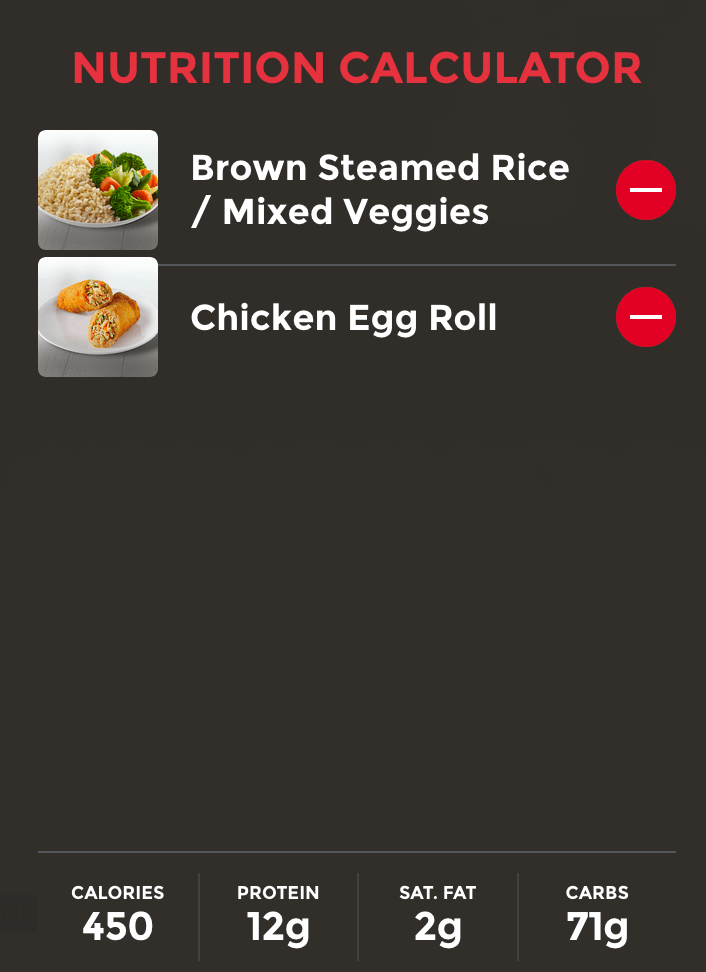
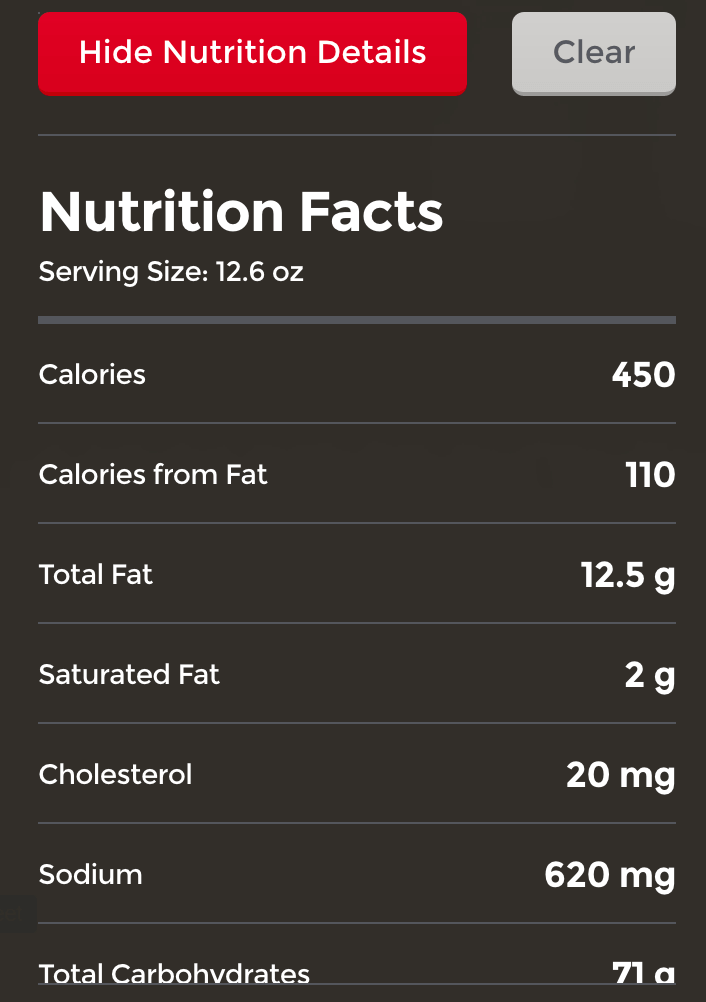
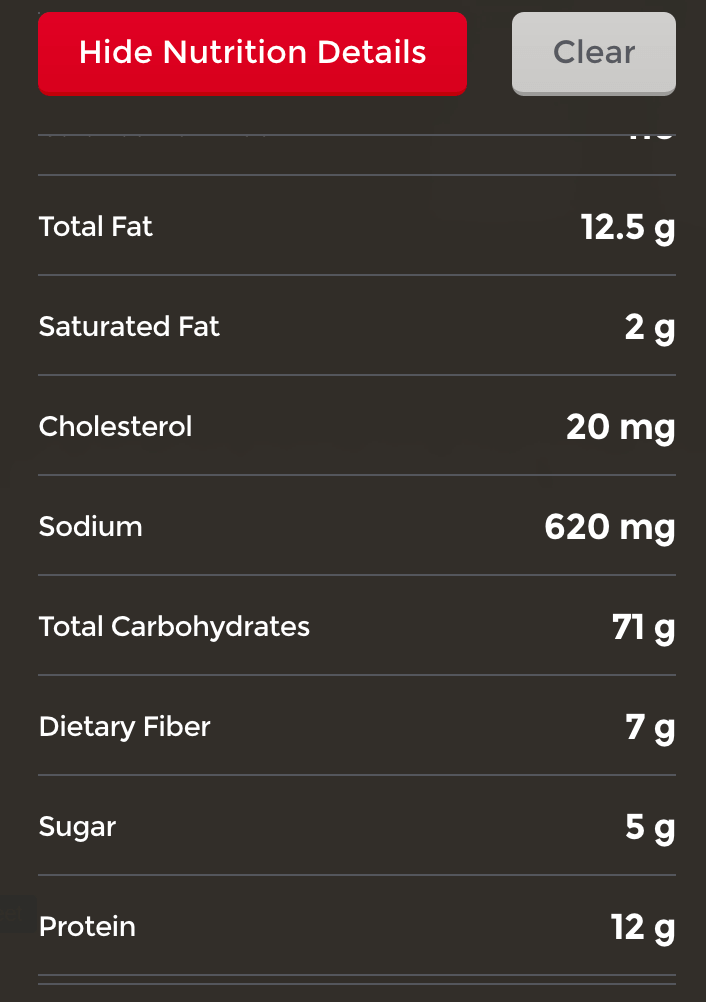
All other entrees at Panda Express unfortunately have phosphate and/or potassium additives.
I would recommend choosing a bowl of half rice and greens for a lesser amount of phosphate additives. A chicken egg roll to go along with it can be acceptable. This meal provides about 620 milligrams of sodium and 12 grams of protein and 7 grams of fiber (and 64 net grams of carbohydrates for those of you following a renal diabetic diet).
Cream cheese rangoons are phosphate/potassium additive free, as is the hot and sour soup (mind your fluids and keep to the smaller serving).
Kidney Friendly Coffee Shops
When choosing a fancy coffee order, keeping to the small (“tall”) cup size is a great way to enjoy while not overdoing it. You still get 12 ounces of your beverage but won’t have to push away a cup of water at your next meal.
Of course, black coffee is best (and yes, you can have coffee if you have kidney disease).
Choose sugar-free syrups if you need a sweetened drink. Not a fan of sugar-free? Try half sugar-free, half regular. A venti sweetened black coffee will set a woman over her daily allowance of added sugars. Also, skip the whip for even less sugar and saturated fat.
Finding the phosphate additives here is much trickier as they do not feature a webpage or PDF that includes all ingredients. To identify if a menu item has additives, you need to individually select that option and then review the ingredients. You can still do “control + F” search on that web page to make it a bit quicker.
Kidney Friendly Options at Starbucks
Stick to the cow’s milk or almond milk. Oat and coconut milk options have phosphate additives, as shown in the image above. Soy is difficult to find and may vary store-to-store.

The cafe mocha has no potassium or phosphate additives (although chocolate is typically seen as higher in phosphorus naturally). Vanilla and classic syrups have potassium additives but no phosphate so could be acceptable in small quantities.
If you need breakfast to go along with it, the Spinach, Feta, and Egg White Wrap is a decent choice with no additives. Beware the sodium content, however, as it clocks in at 830 milligrams.
The Sprouted Grain Vegan Bagel will give you 12 grams of protein and 7 grams of fiber along with 490 milligrams of sodium for 330 calories. Having some cream cheese, which is lower in phosphorus and potassium is acceptable.
In fact, the majority of their hot bakery items do not have phosphates included, with the exception of their smoked bacon.
Need lunch? The Tomato and Mozzarella sandwich should do, with 580 milligrams sodium and 15 grams of protein (although that may be too much protein if you’re on a severe protein restriction).
The Prosnax Green Apples, Egg, Mild Cheddar Cheese, and Cashews Snack Box may be a better option at 250 milligrams sodium and 13 grams protein for 320 calories.
Bakery sweets are not recommended due to the low nutrition value and high sugar, saturated fat, and often times sodium content.
Kidney Friendly Sandwiches

Choose the least-processed meats (if any). Sticking to a veggie sandwich is ideal in this situation as most of the meat options in a deli will be significantly high in sodium and potentially have phosphate and/or potassium additives.
Adding creaminess with avocado (if your potassium allows for it), regular mayo, vinegar and oil are good options. Wraps are generally not recommended as the tortillas are high in sodium and are most guaranteed to include phosphate additives.
Following a Renal Diet at Subway
A 6-inch Veggie Delite on 9-grain wheat with some avocado and mayo will surely be filling (and bonus!- it’s one of the cheaper menu items).
Don’t like wheat and need a little animal meat? Try the Turkey Breast with no added phosphates on the artisan flatbread. It’ll push you up to 720 milligrams of sodium and 18 grams of protein but still includes 5 grams of fiber.
I wouldn’t bother with the sliders considering they’re not filling enough for a meal but provide the sodium amount for one (about 500 milligrams for only 200 calories and 1 gram of fiber).
For the best side, grab the applesauce pack for an easy and portable side that is low in potassium. Add a small drink if you need it – brewed iced tea or bottled water is best here.
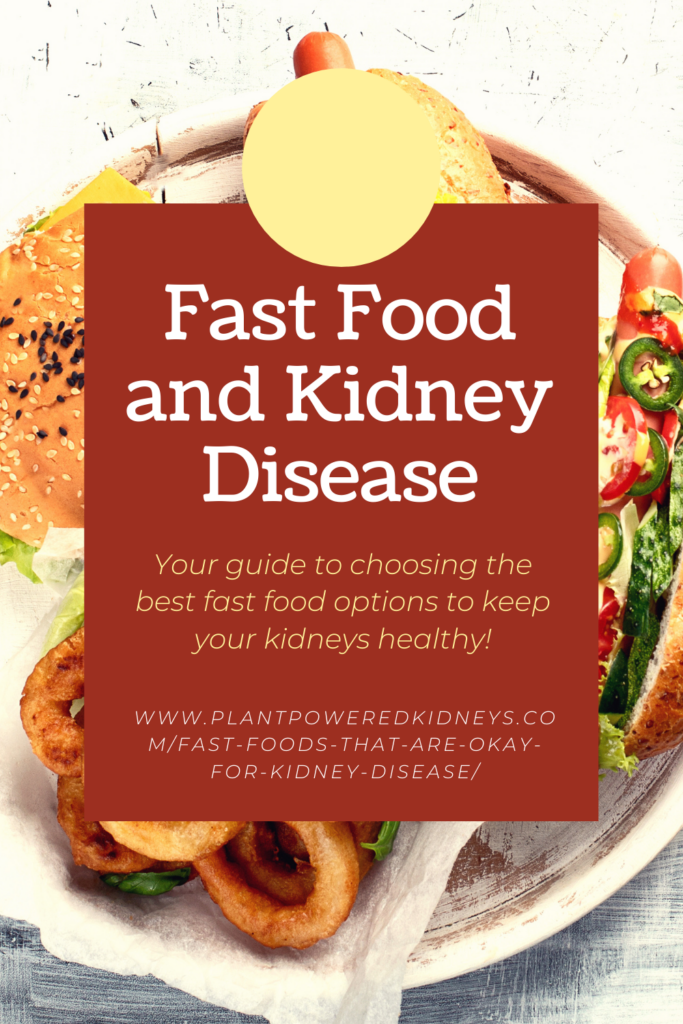
Kidney Friendly Taco Order
Not only do I actively participate in #TacoTuesday, but even I will swing through for a Taco Bell lunch from time to time. And I have a bit of a bias with Taco Bell because I love their nutrition calculator!! Tacos can absolutely be a part of fast foods that are okay for kidney disease – it just takes some variation in the typical orders to make them more kidney friendly.
When it comes to tacos, choose crunchy and corn tortillas over soft shell flour tortillas. Corn tortillas are significantly lower in sodium (sometimes even with no added sodium) compared to flour tortillas that can be hundreds of milligrams of sodium – and we’re just talking about the tortilla!
Mexican restaurants will often have vegetarian and vegan options easily available. Two of the biggest veggies included in Mexican-style food are peppers and onions, which are lower in potassium.
Go easy on the salsa. It adds up quick- and I’m talking about both sodium and potassium here. See if they offer a corn-based salsa to at least lessen the potassium content.
Kidney Friendly Options at Taco Bell
After doing the research between these different restaurants, Taco Bell’s nutrition information actually allows you to sort lowest to highest sodium!
I recommend going for the crunchy tacos over soft just because of the sodium content (310 milligrams compared to 500 milligrams per taco). You can almost have two crunchy tacos for the amount of sodium you get from one soft taco!
If you can’t stay away from soft taco, I recommend the Fresco Shredded Chicken soft taco, at 430 milligrams of sodium and no added phosphates in the chicken.

Really hungry? Get the Veggie Power Bowl but skip the cheese, sour cream and avocado ranch sauce to keep the sodium better controlled at 690 milligrams. But for that you get 8 grams of protein and 10 grams of fiber, which will surely fill you up!
Kidney Friendly Pizza
Pizza is typically a no-no when it comes to the renal diet. High in sodium (from the crust, cheese, and toppings like processed meats), high in potassium (from the cheese, tomato sauce, and toppings), and low in nutritional value of fiber. But you can make changes to help influence that!
Choose a whole wheat crust when available. Thin crust can be another option but may be just as high in sodium as the regular crust, plus more saturated fats. Each company will be a little different.
Many pizza joints like Pieology are now adding cauliflower crusts to their menu. This can be a great way to get in more vegetables but is often higher in sodium.


Kidney Friendly Options at Papa John’s
Go with Papa John’s gluten-free crust for the lowest sodium at 100 milligrams. Choose Alfredo sauce over the traditional tomato-based sauces to keep potassium in check.
Good news with PJ’s ingredients is that they don’t have added phosphate or potassium preservatives in their crusts.
The bacon, philly steak and chicken meat options have added phosphates. Other meat options do not have additives but will definitely add up in sodium. I would still recommend avoiding all meat options when it comes to pizza.
A slice of the gluten-free garden fresh pizza will give you only 300 milligrams per slice.
The plain bread sticks or cheese sticks are phosphate-additive free but definitely won’t contribute much nutritional benefits and, again, raise the sodium of your meal. Each bread stick will tack on about 250-300 milligrams of sodium, about the same amount as a whole slice of pizza.
How can I find kidney-friendly restaurants near me?
If you need help in finding some places around you, check out the National Kidney Foundation’s My Food Coach app where you can search local restaurants. It will give you some insight into options available nearby but you will still have to do some of the heavy lifting yourself.
However, just like this information here, the exact phosphorus load will not be available as it is not required to be calculated by restaurants.
I hope in sharing the links and information here I have made it slightly easier on you to figure that out for yourself.
I have one more resource for you. Here is an article that shows a comparison of potassium and phosphorus content of different fast food restaurants from 2014. Keep in mind this information may change as companies change recipes and ingredients.
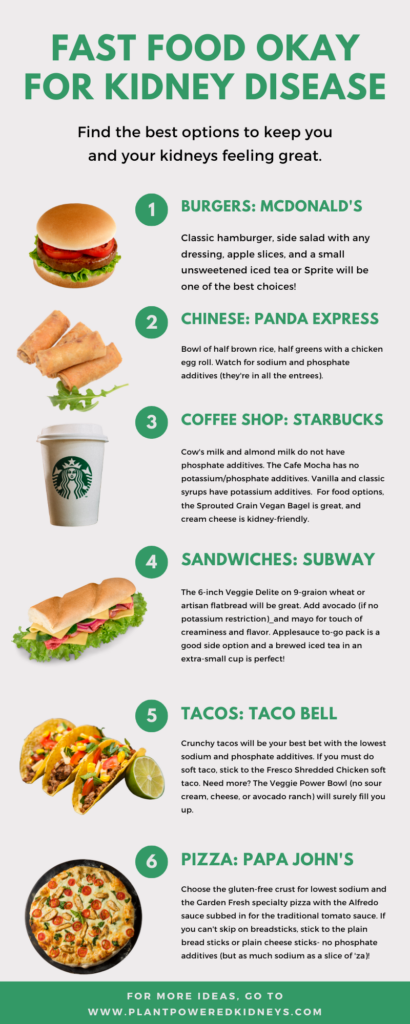
Summary
In general, we need to all have a better game plan when it comes to eating out and grabbing some fast food. It’s unrealistic to say we will never go out to eat, so let’s make a plan and have some quick meals that we can find are best for us. Taking the time to find some fast foods that are okay for kidney disease is not a bad thing and can still support your kidney health goals.
If you are already experiencing challenges in managing your phosphorus, sodium/blood pressure, and potassium levels, now is not the time for you to be dining out with kidney disease. Set up a game plan for yourself on how you can best manage those times where you find that going out to eat is necessary and plan accordingly.
To help you make that game plan for yourself, I have created a workbook to guide you and keep you on track. List your preferred restaurants, look up their information and keep track of a few menu options you know are best for you and your kidney health goals.
I highly recommend you do the work and check your restaurants. Then review the information you collect with your renal dietitian and nephrologist to be sure that it is acceptable for your kidney disease, your labs, your health.

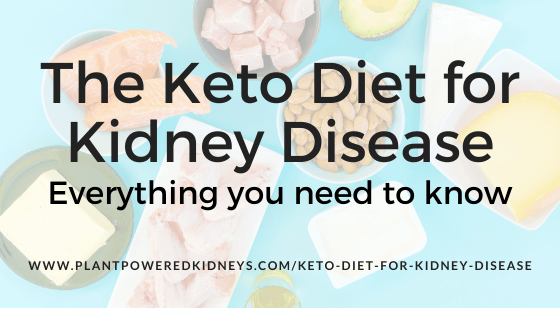
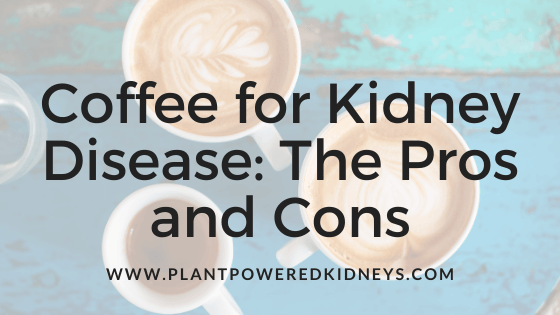
Great information. Thanks for sharing.
Happy you enjoyed it! 🙂
Hi,
Newly diagnosed with kidney disease and have been doing alot of research on what one should eat or avoid and many of the websites that talk about foods that are allowed mention white breads and flour tortillas are recommended yet other sites will say you should have whole wheat or choose corn tortillas over flour tortillas. There seems to be an awful lot of contradictory information and I don’t know what to believe. I read where you recommend corn tortillas over flour so again I’m finding that this is getting more and more confusing. Help!
Hi MB!
You’re so right – the renal diet and all the recommendations can be quite confusing and overwhelming. The challenging thing about kidney disease is that there are so many causes and so many unique situations that the recommendations will tend to be all over the place. Old recommendations used to promote white breads and flours, but no more! We now know that whole grains have more nutrients that are very helpful not only for CKD, but overall health. The phosphorus is not well absorbed, which is why it can be a part of a low phosphorus diet. Corn tortillas are a great option as they don’t usually have phosphate additives and are much lower in sodium than flour tortillas.
Finally, if you’re still unsure, working privately with a dietitian can be a great way to cut through all the noise and get personalized answers based on your own health needs. We have a dietitian that just started taking clients here. You can meet our team of dietitians here to learn more. 🙂
How true are the labels on the ingredients of the food that we buy.
For the most part, they’re pretty accurate. But some companies can make mistakes, so it’s important to think a little bit about it. I’ve seen dried mango with “0 milligrams” of potassium – that has to be false.
Great information I’ve just been on dialysis for three weeks and being afraid to eat the norm foods really scare me. So thank you for this great information
I’m happy this helps, Terry! There’s a lot to deal with when starting dialysis. I know it can be overwhelming – I’ve worked with hundreds of patients on dialysis. But it gets easier, I promise! Don’t forget to check out our article about Protein Supplements for dialysis! – Jen 🙂
Great guide Jen. It’s good to know that there are some fast foods that are at least acceptable for CKD patients. This info will help me make better choices about what I order, and more importantly, how often. I’m also going to take advantage of the SMART diet tips and fine tune my plan. Thanks as always.
So glad it’s helped, Willie! Love that you’re using the SMART goals to set a plan in place, as well!
Jen, how does intermittent fasting Help CKD. Is there a way to include it in my diet plan? Thanks
Richard
Hi Richard! There is limited evidence as to whether intermittent fasting has a direct impact on kidney protection. In any case, it’s best to discuss something like this with your healthcare team first as not everyone will benefit from IF. 🙂
hi thanks for the imformation my auntie have kidney promblems and that really helped her so thank you so so much
You’re most welcome, Andreius! 🙂
Having just left the hospital after threatening to leave the coming night at 3am “bare naked” if I were not released immediately following my 2 week forced stay, I somehow went to stage 3, 45# kidney function..
All due to a mysterious, strange and painful hip joint infection that caused blood MRSA dropping kidney function to 17.
This article is very helpful since my iidney doctor has not sent me to any nutrition classes.
Thank you
Lewis
We’re glad that you have found this information helpful! 🙂
Great information. Glad to know that the meds is fast-food that we can eat. It’s confusing trying to figure out what and what not to eat. One site says this and one site says another. Thank you for making it easier for us.
So happy to help, Pamela. It’s important to find good options out there, because sometimes we NEED to eat when we’re out. That’s just real life, right?
I make my own bread and I have been using Gold Medal flour because I read that was the best flour choice for kidney disease, but should I be using Whole Wheat flour instead.
Either will fit! Whole wheat can be a great option as it is a little higher in fiber, but you can also include fiber with other foods/components of a meal using the bread you make. 🙂